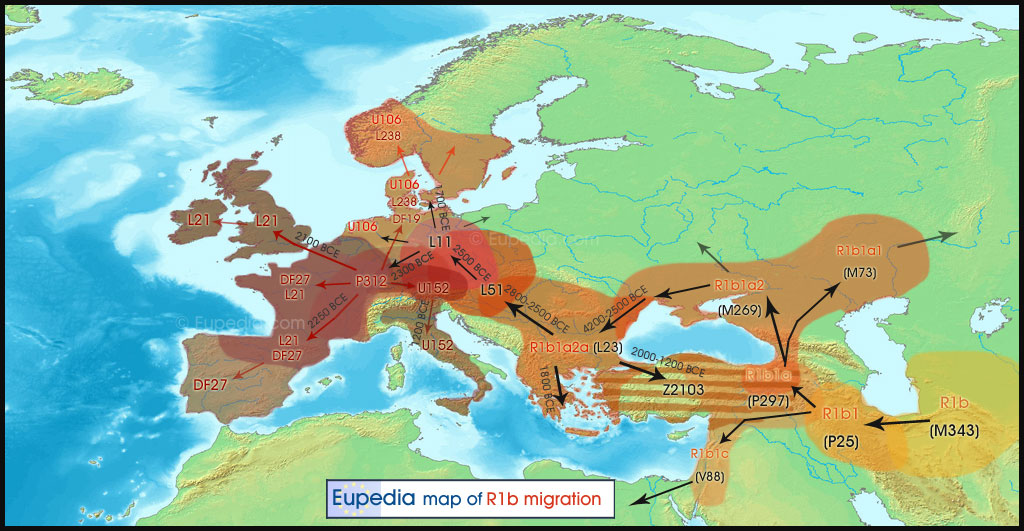Tone
Regular Member
- Messages
- 49
- Reaction score
- 11
- Points
- 0
- Ethnic group
- Germanic-Slavic Hybrid
- Y-DNA haplogroup
- R1B
- mtDNA haplogroup
- H
We should except R1b to be in 4,600 year old central Germany Y DNA samples. That is exactly the place and time Germanic Italo Celts started to conquer. When we say Bell Beaker culture we are going off of what Archaeologist since the 1800's have said even though there where new Indo European culture that formed by conquering and mixing with Bell Beaker like Unetice.
I agree with you that Unetice was a warrior culture and was almost definitely the forebearer to Germanic/Celtic/Italic. They probably spoke an Indo-European language and when finally tested they will most likely be largely R1B.
However, the 4600 year old German sample was from the Bell Beaker Culture, not Unetice. And it was R1B. That's just the fact of the matter. You could dismiss this R1B as being from the future Unetice warriors who were in the midst of conquering the Bell-Beakers, but I think you might be bending the facts to fit your theory.
Until other evidence is found, the theory has to be that Unetice culture replace an r1b Bell Beaker culture in central Europe. I believe Unetice culture was a hybrid between Bell Beaker and Corded Ware. Unetice probably was predominantly r1b but had the culture of and language of Corded Ware. But that's just a theory and I don't claim to be right.
wait so ur saying they have 5,000 year old R1a from the steppes i have not heard of that all i know is they have 6 y dna samples that are 6,000 and 5,000 years old from indo european yamna culture kurgens but have not realsed the results yet.
I'm sorry I probably have my dates wrong. I thought they extracted r1a from Kurgan mounds.
they did not test the r1b for R1b L51 or L11 so we dont know but it almost deifntley had one of those two. When my dad took a anctry.c om dna test they said he had R1b because they did not test him for subclades then he took a genographic test they say he has r1b l11/p310 but he defintley has sometype of subclade.
Okay. I understand. Thanks.


